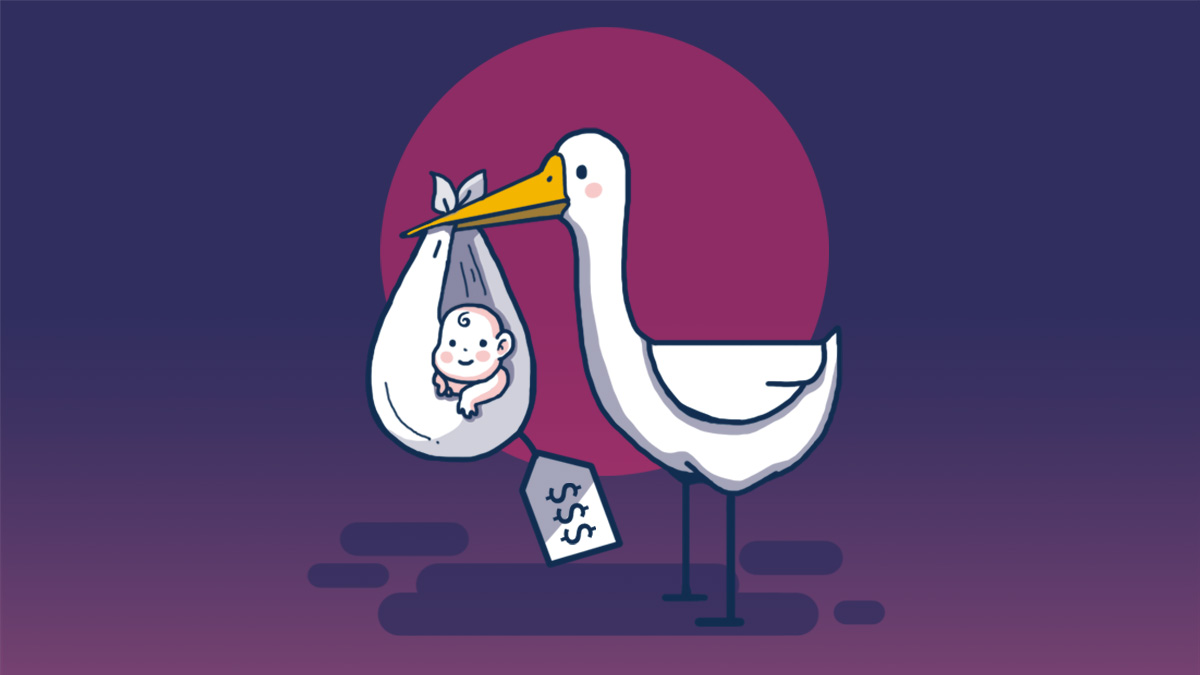
The cost of delivering a baby without insurance in Australia can be a significant financial burden, especially for expectant parents who haven’t planned for this expense. Navigating the healthcare system and understanding the associated costs can feel overwhelming, but it’s crucial to be informed about your options. This guide will delve into the key components that contribute to the overall cost, exploring factors like location, type of delivery, and available financial assistance programs. We’ll also discuss alternative payment methods and provide tips for budgeting and planning for this life-changing event.
Understanding the cost breakdown is essential for making informed decisions about your healthcare choices. Public hospitals offer subsidized care, while private hospitals often come with higher fees. The type of delivery, whether vaginal or cesarean, can also significantly impact the cost, as can potential complications. Knowing your options and understanding the financial implications will empower you to make the best choices for your family.
Understanding the Cost Breakdown

Having a baby is a joyous occasion, but it can also be expensive, especially in Australia if you don’t have private health insurance. This section will break down the costs involved in delivering a baby without insurance, helping you understand the financial implications.
Hospital Fees
Hospital fees are a significant component of the overall cost of delivering a baby. Public hospitals are funded by the government, so you won’t have to pay for your care directly. However, there may be some out-of-pocket expenses, such as for private rooms or certain medications. Private hospitals, on the other hand, operate on a fee-for-service basis, meaning you will be charged for the services you receive.
- Public Hospitals: Public hospitals are funded by the government, so you won’t have to pay for your care directly. However, there may be some out-of-pocket expenses, such as for private rooms or certain medications. For example, you might need to pay for a private room if it’s available, or for medications that are not covered by the Pharmaceutical Benefits Scheme (PBS).
- Private Hospitals: Private hospitals charge for their services, and these fees can vary significantly depending on the hospital and the type of delivery. You will need to pay for the hospital stay, the delivery itself, and any other services you receive, such as anesthesia or specialist consultations. The cost of a private hospital delivery can range from several thousand dollars to tens of thousands of dollars, depending on the complexity of the delivery and the services required.
Doctor’s Fees
You’ll need to see an obstetrician or a general practitioner for your prenatal care and the delivery itself. Fees for obstetricians and GPs can vary depending on their experience, location, and the complexity of your pregnancy.
- Obstetricians: Obstetricians specialize in pregnancy and childbirth. Their fees can be quite high, especially if you have a complex pregnancy or require a C-section. The cost of an obstetrician can range from several hundred dollars to several thousand dollars per visit.
- General Practitioners (GPs): GPs can also provide prenatal care, but they may not be able to handle complex pregnancies. Their fees are generally lower than those of obstetricians.
Other Associated Costs
In addition to hospital and doctor’s fees, there are other costs associated with having a baby, including:
- Prenatal Tests: These tests are necessary to monitor your pregnancy and ensure the health of your baby. They can include ultrasounds, blood tests, and genetic testing. The cost of these tests can vary depending on the specific tests you require.
- Medication: You may need to take medication during your pregnancy, such as iron supplements or vitamins. The cost of medication will depend on the specific drugs you need and whether they are covered by the PBS.
- Childbirth Classes: These classes can help you prepare for labor and delivery. They are often offered by hospitals or private organizations. The cost of childbirth classes can vary depending on the provider and the length of the course.
- Baby Equipment: You will need to purchase a range of baby equipment, such as a cot, stroller, and car seat. The cost of these items can vary significantly depending on the brands and features you choose.
- Other Expenses: Other expenses may include maternity clothes, breastfeeding supplies, and childcare.
Factors Influencing Cost
The cost of delivering a baby without insurance in Australia can vary significantly based on several factors. Understanding these factors can help you budget effectively and make informed decisions about your birthing plan.
Location
The location of your delivery plays a significant role in the overall cost. Private hospitals generally have higher fees compared to public hospitals. For instance, in metropolitan areas, the cost of delivering a baby in a private hospital can be substantially higher than in regional areas.
Type of Delivery
The type of delivery, whether vaginal or cesarean, also impacts the cost. Cesarean deliveries typically involve longer hospital stays and require more medical intervention, leading to higher fees.
Potential Complications
Unforeseen complications during labor or delivery can significantly increase the cost. These complications might necessitate additional medical interventions, longer hospital stays, or specialized care, resulting in higher fees.
Choosing a Private Obstetrician
Opting for a private obstetrician instead of a public hospital doctor can increase the cost. Private obstetricians typically charge consultation fees and may have higher delivery fees compared to public hospital doctors.
Government Subsidies and Financial Assistance, Cost of delivering a baby without insurance in australia
The Australian government offers various subsidies and financial assistance programs to support expectant mothers. These programs can help offset the cost of delivering a baby.
Navigating the Healthcare System

Navigating the healthcare system in Australia for childbirth without insurance can seem daunting, but with the right information and steps, it can be managed effectively. Understanding the public healthcare system and the available options will help you access the necessary services.
Accessing Healthcare Services
In Australia, the public healthcare system, known as Medicare, provides essential healthcare services, including pregnancy and childbirth care. However, it’s crucial to understand the limitations and processes involved.
- Register with a GP: The first step is to register with a General Practitioner (GP). Your GP will be your primary point of contact for all pregnancy-related care, including regular check-ups, antenatal care, and referrals to specialists if needed.
- Access Public Hospital Services: Public hospitals offer free or subsidized childbirth services. However, you’ll need to be referred by your GP to access these services. It’s advisable to contact the hospital directly to understand their waiting lists and booking procedures.
- Explore Private Hospital Options: While private hospitals require payment, they offer a wider range of choices and amenities. However, you’ll need to pay for the services upfront and may need to have private health insurance to cover a portion of the costs.
- Consider Midwifery Care: Midwives provide comprehensive antenatal, labor, and postnatal care. They are often a preferred option for women seeking a more natural and personalized birthing experience. You can find a midwife through your GP or the Australian College of Midwives.
Navigating the Public Healthcare System
Understanding the process of accessing public healthcare services is essential for navigating the system effectively. Here’s a step-by-step guide:
- Register with a GP: The first step is to register with a GP. Your GP will be your primary point of contact for all pregnancy-related care, including regular check-ups, antenatal care, and referrals to specialists if needed.
- Discuss Your Pregnancy with Your GP: Once registered, discuss your pregnancy with your GP. They will assess your health, conduct routine check-ups, and provide advice on prenatal care.
- Obtain a Referral to a Public Hospital: Your GP will provide you with a referral to a public hospital for childbirth services. This referral is essential for accessing free or subsidized care.
- Contact the Hospital: Contact the chosen hospital directly to understand their booking procedures, waiting lists, and available services. You may need to attend an antenatal clinic for further assessment and care.
- Attend Antenatal Classes: Many hospitals offer antenatal classes that provide valuable information on pregnancy, labor, and childbirth. These classes can help you prepare for the journey ahead.
Cost Breakdown for Pregnancy and Childbirth
The following table Artikels the typical costs associated with different stages of pregnancy and childbirth in Australia without insurance:
| Stage | Typical Costs |
|---|---|
| Antenatal Care (GP Visits, Tests) | $500 – $1,000 |
| Labor and Delivery (Public Hospital) | Free or Subsidized |
| Postnatal Care (GP Visits, Hospital Stay) | $500 – $1,000 |
| Midwifery Care | $2,000 – $4,000 |
| Private Hospital Delivery | $5,000 – $10,000 |
Alternative Payment Options
Facing the costs of childbirth without insurance can be daunting, but several alternative payment options exist to help manage expenses. These options can provide financial relief and make childbirth more accessible for uninsured individuals.
Payment Plans
Payment plans are agreements between the patient and healthcare provider that allow the cost of childbirth to be spread over a period of time. These plans typically involve making regular monthly payments until the full amount is paid.
- Benefits: Payment plans can ease the financial burden by breaking down the total cost into smaller, more manageable payments. This can make childbirth more affordable for individuals who may not have the funds available upfront.
- Drawbacks: Payment plans often come with interest charges, which can increase the overall cost of childbirth. The interest rate can vary depending on the provider and the terms of the agreement. Additionally, late payments can lead to penalties and may negatively impact credit scores.
Fundraising Initiatives
Fundraising initiatives can be a viable option for individuals seeking financial assistance for childbirth expenses. These initiatives often involve raising funds through online platforms, social media campaigns, or community events.
- Benefits: Fundraising initiatives can leverage the support of family, friends, and the community to cover childbirth costs. They can be a valuable resource for individuals who may not have access to other financial assistance options.
- Drawbacks: Fundraising can be time-consuming and may not always be successful in raising the necessary funds. The amount raised can be unpredictable, and it may not cover all expenses associated with childbirth.
Financial Assistance Organizations
Several organizations provide financial assistance for childbirth expenses to uninsured individuals. These organizations may offer grants, loans, or other forms of financial support.
- Benefits: Financial assistance organizations can provide significant financial relief for uninsured individuals facing childbirth expenses. They may offer flexible repayment options and low-interest rates.
- Drawbacks: Financial assistance organizations may have specific eligibility requirements, and the application process can be lengthy and complex. The amount of assistance provided can vary depending on the organization and the individual’s circumstances.
Planning and Budgeting

Planning and budgeting are crucial when expecting a baby, especially without health insurance. It’s important to understand the potential costs and create a financial plan to manage expenses effectively.
Sample Budget Plan
This sample budget plan is a general guide for uninsured individuals expecting a baby in Australia. The actual costs may vary depending on individual circumstances and choices.
Estimated Costs
- Prenatal care: $1,000 – $3,000 (includes doctor visits, ultrasounds, and other tests)
- Childbirth: $5,000 – $10,000 (includes hospital fees, labor and delivery, and post-natal care)
- Newborn care: $1,000 – $2,000 (includes pediatrician visits, vaccinations, and other essential care)
- Essential items: $2,000 – $5,000 (includes clothing, diapers, formula, crib, car seat, stroller, and other baby essentials)
Monthly Expenses
- Rent/Mortgage: Varies depending on location and housing type
- Utilities: $200 – $400 (includes electricity, gas, water, and internet)
- Food: $500 – $1,000 (including groceries, meals, and snacks)
- Transportation: $200 – $400 (includes petrol, public transport, and parking)
- Other expenses: $200 – $400 (includes personal care, entertainment, and miscellaneous expenses)
Financial Management Tips
- Create a budget: Track your income and expenses to understand your financial situation and identify areas for savings.
- Set financial goals: Define your financial priorities, such as saving for a down payment on a house or funding your child’s education.
- Consider a part-time job: If possible, find a part-time job to supplement your income and cover expenses.
- Look for discounts and deals: Take advantage of discounts and deals on essential baby items, such as clothing, diapers, and formula.
- Negotiate medical bills: If you’re facing high medical bills, negotiate with healthcare providers for a payment plan or a lower amount.
Essential Items and Services
- Clothing: Newborn clothes, swaddles, blankets, socks, hats, and mittens
- Diapers: Disposable diapers or cloth diapers
- Formula: If breastfeeding is not possible or not desired
- Crib: A safe and comfortable place for the baby to sleep
- Car seat: A safe and secure way to transport the baby in a vehicle
- Stroller: For easy transportation of the baby
- Baby monitor: To monitor the baby’s breathing and sounds
- Pediatrician: For regular checkups and medical care
Closing Notes: Cost Of Delivering A Baby Without Insurance In Australia
Preparing for the arrival of a new baby is an exciting time, but it’s important to be financially prepared, especially if you’re navigating the healthcare system without insurance. By understanding the cost breakdown, exploring financial assistance programs, and considering alternative payment options, you can alleviate some of the financial stress associated with childbirth. Remember to plan your budget, prioritize essential items and services, and seek support from resources and organizations that can help you through this journey.
FAQ Guide
What are the typical hospital fees for a vaginal delivery in a public hospital?
Hospital fees for a vaginal delivery in a public hospital are generally covered by Medicare, the Australian government’s universal healthcare system. However, there may be some out-of-pocket expenses for extras, such as private rooms or certain medications.
What are the typical costs associated with a cesarean delivery in a private hospital?
The cost of a cesarean delivery in a private hospital can vary significantly depending on the hospital, obstetrician, and any complications that may arise. Expect to pay several thousand dollars in hospital fees, doctor’s fees, and other associated costs.
What are some resources for financial assistance with childbirth expenses?
Organizations like the Australian Red Cross, the Salvation Army, and local community groups may offer financial assistance programs for families facing childbirth expenses. Additionally, some hospitals have financial assistance programs or payment plans for uninsured individuals.




